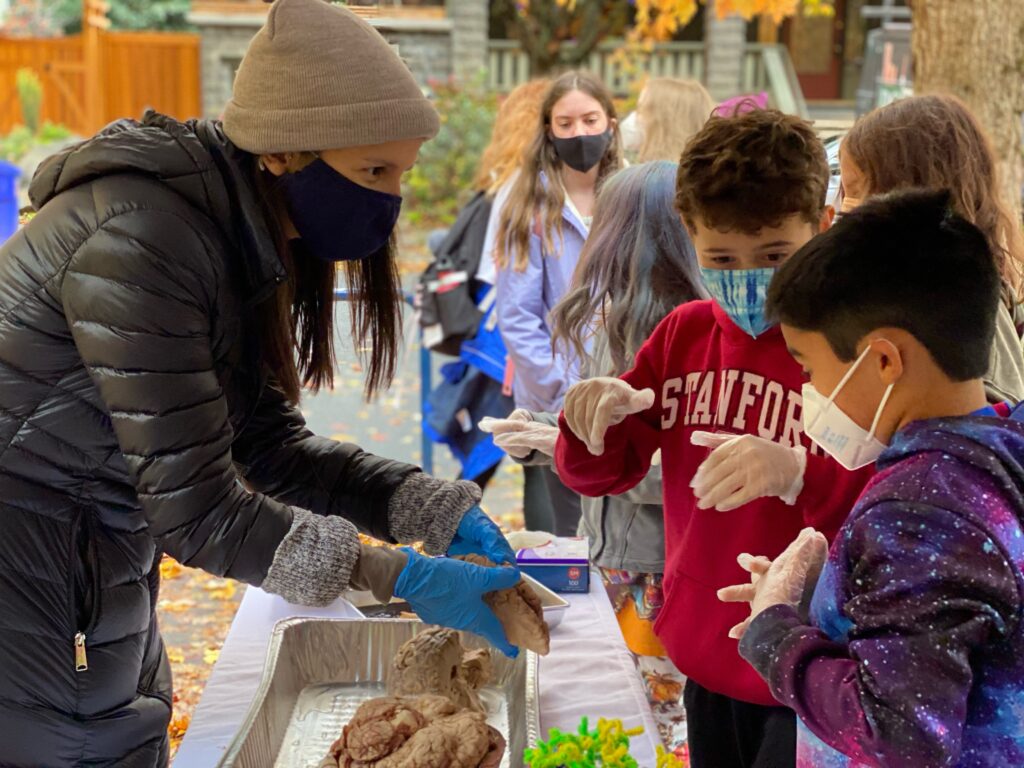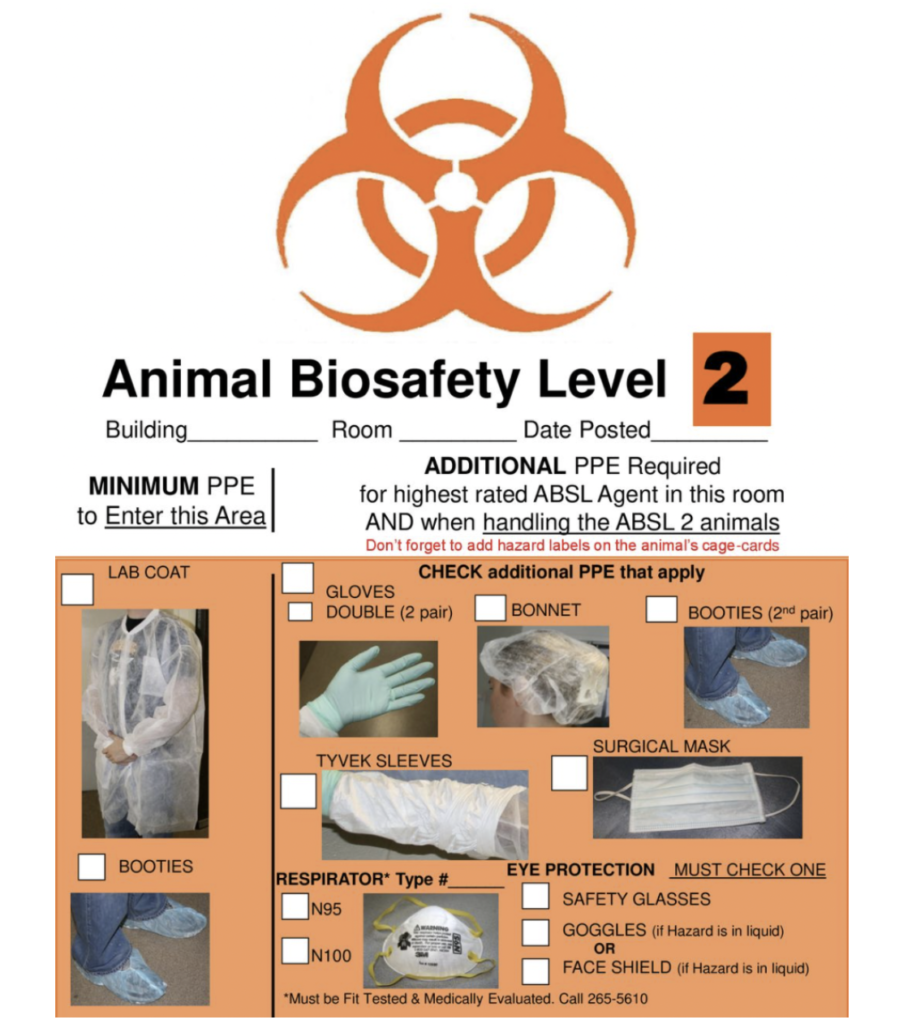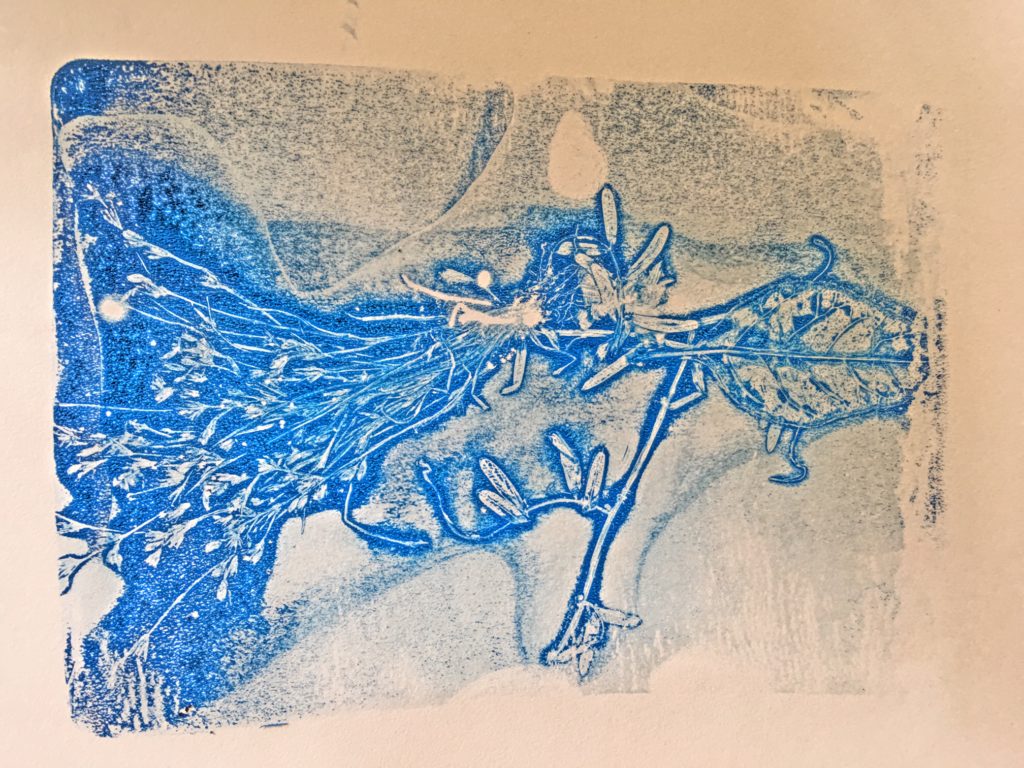Post by Elana Kananykhina, undergraduate at Portland State University. Elana is pursuing a minor in interdisciplinary neuroscience, and volunteers in Adie Rae Wilson-Poe’s cannabinoid research lab at Legacy Research Institute.
How did I get here?
Ever since I was a young girl, I put a lot of effort into finding answers to life’s questions. I frequently had my nose in encyclopedias, and my deepest inquiries were usually regarding human behaviour. In essence, I wanted to know – why are we the way we are?

Elana at Sunnyside Environmental School, Portland Public Schools
This led me into an obsession with philosophy, which left me with more questions than answers. I thought I could get more of the answers I wanted within the field of psychology, but I finally got hooked by neuroscience when I realized that we can, indeed, explain our behaviour with empirical science.
Neurobiology, the study of the nervous system, is such a rich field with so many unanswered questions. Neuroscience as an explicit discipline only emerged in the late 20th century, with the first freestanding neuroscience department founded only 57 years ago!
Learn more: Why Study the History of Neuroscience?
As such, a lot of neuroscience labs are still in the stages of needing to test primarily on animals before human studies can be safely conducted. Animal testing is a complex endeavor with a lot of ethical considerations and care required. There’s a common misconception that the people conducting animal experiments are inhumane and cruel, but I haven’t found that to be the case. Much care and attention is taken to reduce pain and suffering for the research animals from the moment they enter the lab. As such, the initial undertaking upon agreeing to volunteer to do this kind of research is a whole lot of important training.
LEARN MORE: Public Attitudes toward Animal Research: A Review
LEARN MORE: Public perception of laboratory animal testing: Historical, philosophical, and ethical view
LEARN MORE: Attitudes Toward Animal Research Among Medical Students in the United States

What does training entail?
The first step is signing paperwork and doing some quizzes. This covers standards of conduct, HIPAA, mandatory reporting, intellectual property, and all of the basics that come with working in any lab. If you plan on doing this work, be sure to carve out a couple of days for this part!
Then comes the more intensive online trainings. For me, there were a total of 12 trainings, most of which with 3-14 modules each. Most modules included a quiz at the end to test your comprehension, and it’s mandatory that you get 80%+ to pass the training.
This lab in particular is currently working with rats, so my trainings included some of the following titles:
- Basic Course in Animal Welfare
- Working with Rats in Research Settings
- Reducing Pain and Distress in Laboratory Mice and Rats
These courses included a thorough overview in proper handling to keep both you and the rodents safe, protected, and as comfortable as possible at all times. They went over everything from how to read their body language for signs of distress to how to make reduce the chances of developing an allergy to the animals. Did you know that it’s common for laboratory workers to develop allergies after a few years of working with rodents? Staying on top of proper PPE protocols is critical to making this a sustainable career!

Learn more: Anaphylaxis in laboratory workers because of rodent handling
Luckily, LRI takes employee health very seriously. Upon finishing my trainings, I was scheduled for a health check to make sure I was up to date with my vaccines, and offered boosters for any that were past their timeline for protection. This checkup also included a health background check to ensure I was fit for working with animals.
To further my safety training, I also completed the following:
- The Aseptic Surgery Course
- Basic Introduction to Biosafety
- Initial Biosafety Training
- Animal Biosafety
These courses introduced potential hazards in the lab; how to avoid them, how to work with them when necessary, and how to fix problems with things go wrong. The aseptic surgery course went into detail about how to conduct surgeries, both survival surgeries and otherwise. This included information about how to make sure the animal has a smooth recovery (for survival surgeries), how to protect yourself and others when conducting procedures with sharps, how to properly dispose of biohazardous material.
What I appreciated the most is that these trainings didn’t gloss over the ethical dilemmas of this work.

Pied Piper 14×14 inches oil on wood by Jeff Leake
As a general rule, researchers must have exhausted all other options prior to even considering using animals. When they do receive the animals, they must go above and beyond to make sure the comfort of the animal is a top priority.
I didn’t know, until doing this work, just how complex bioethics could be when considering it as a factor in research. For instance, the topic of analgesics – it’s common practice now to provide pain relief to animals that have undergone painful procedures. This is not only for the comfort of the animal, but also because pain can skew research outcomes. However, when research is focused on the studying the effect of a drug, adding an analgesic to the mix may have confounding effects and also skew the outcome. So, scientists are left with difficult decisions (often!) Luckily, there are dedicated teams of experts that can assist with reviewing plans; getting to know the names of these organizations is also part of your training!
LEARN MORE: Animal Research Frequently Asked Questions
LEARN MORE: To Treat or Not to Treat: The Effects of Pain on Experimental Parameters
LEARN MORE: American Association for Laboratory Animal Science (AALAS) Foundation
The final online trainings I did included the following:
- Conflict of Interest
- Responsible Conduct in Research
- Post-Approval Monitoring
These courses included information about the process of undergoing regular reviews to ensure high standards of humane care, disclosing a conflict of interest (financial or otherwise), how peer reviews work, how to avoid misconduct, and much more.
As I’d mentioned, each training included up to 14 modules, so the depth of information is more than I can go into during this brief overview! It’s all very interesting; just be sure to set aside a sizeable chunk of time to complete this so you can get started at the lab as soon as you can.
Upon being able to step foot into the lab, I was given a thorough orientation about safety protocols in the building. Last, but certainly not least, I did what’s called the “tier 2” animal handling training, which went over (in-person) basic veterinary techniques to work with the animals and gave me the opportunity to do it myself.



